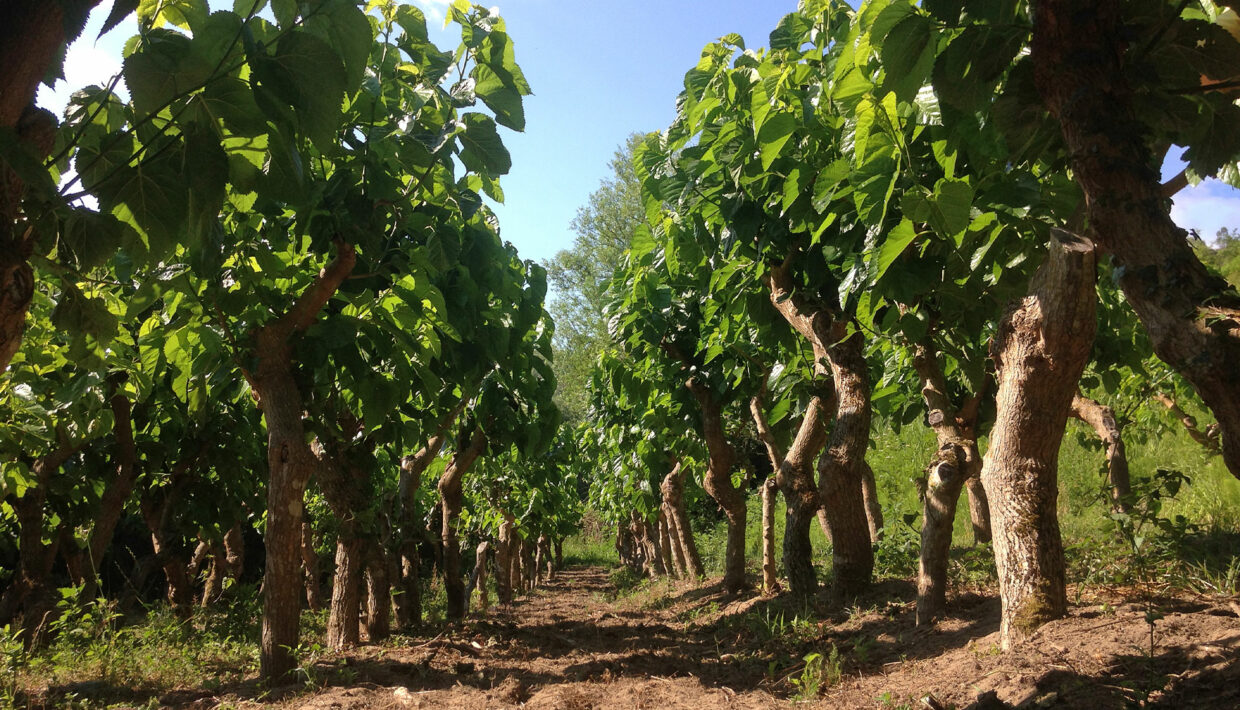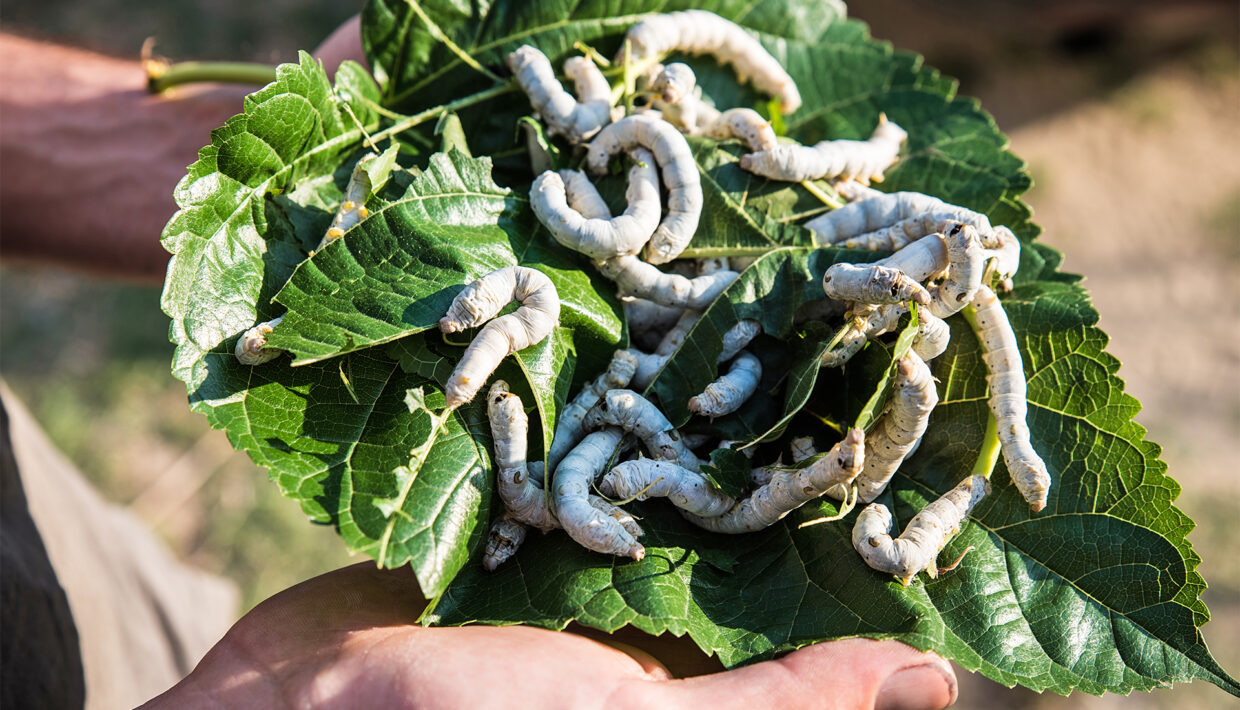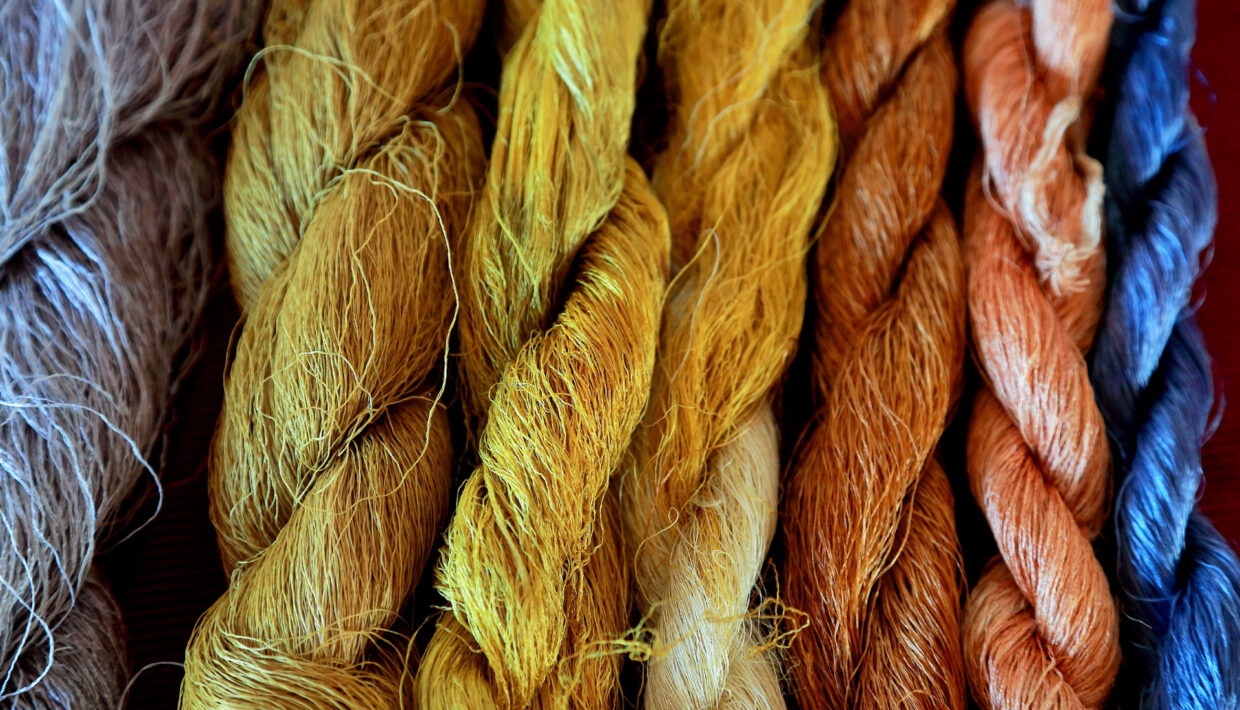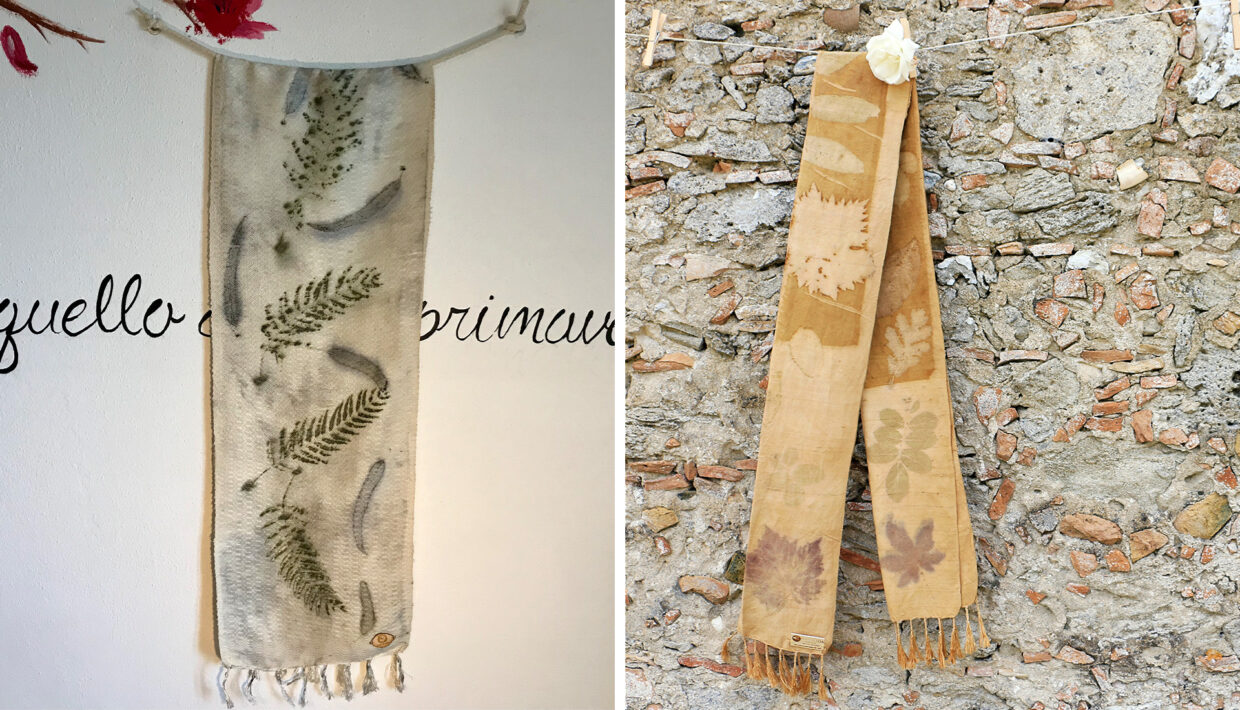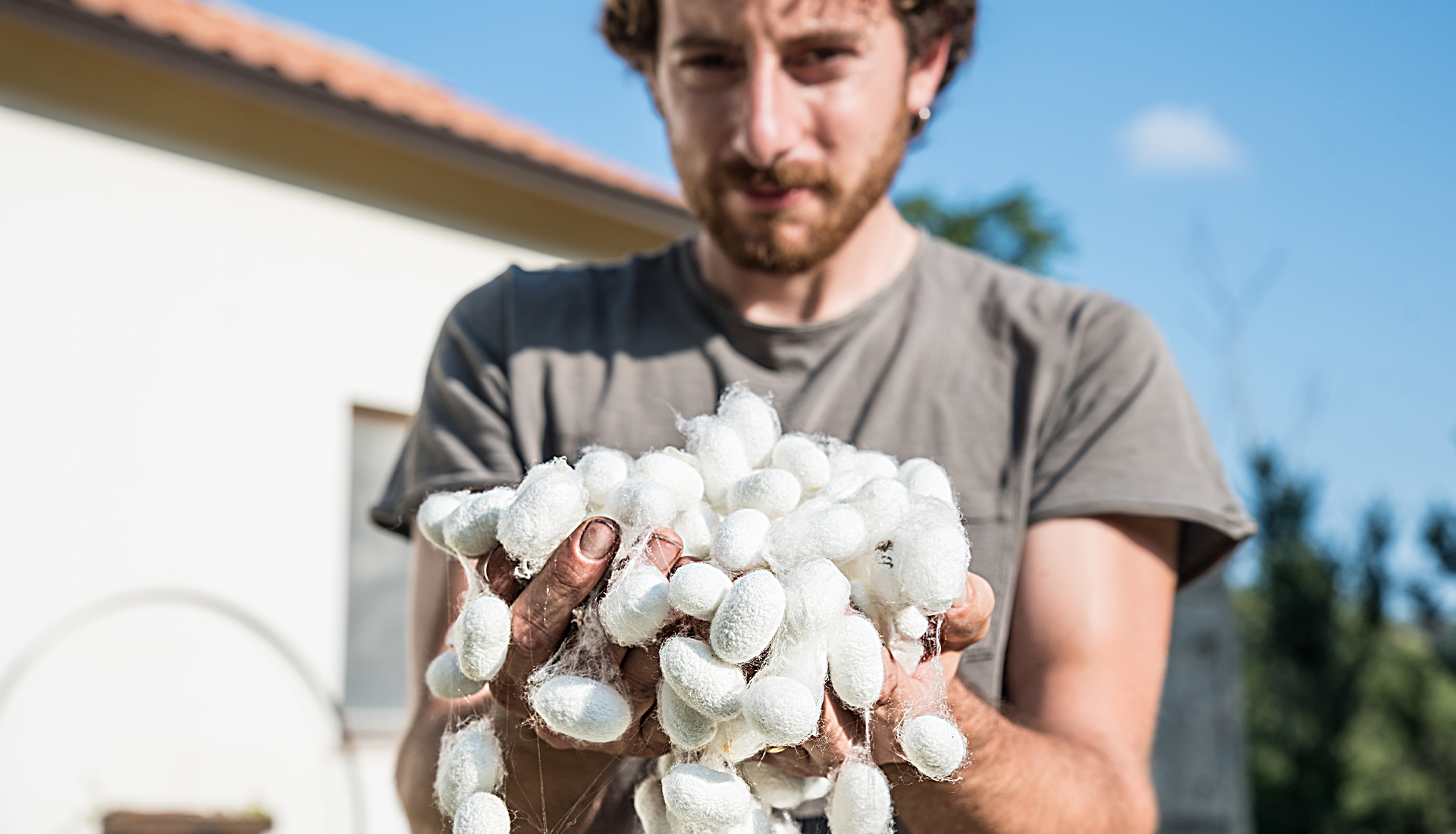“Our roots go back to a distant past when our grandparents lived off the land. This is a passion that has been passed down from generation to generation, a special world that today allows us to be in contact with nature and enjoy life authentically.” This is the thinking of Domenico Vivino, Miriam Pugliese and Giovanna Bagnato, of the Nido di Seta agricultural co-operative in San Floro, a small Calabrian organisation set up in 2014 to breathe new life into disused municipal land, home to more than 3,000 mulberry trees.
Armed with courage and willpower, these young men, returned after their studies to their home region and recreated the ancient art of mulberry farming, practiced in southern Italy since the 12th century. “In the past, mulberry growing was a central activity in our area,” they explain. “We decided to recover a part of our history, bringing a touch of modern flair, and restoring a small Calabrian Silk Road. Starting with the land and its resources, via the breeding of worms, we arrive at the finished product, and all through an entirely artisanal supply chain. We produce 100% Italian silk, hand-woven on a loom and dyed with natural products.”
Rustic, soil-protecting plants
Across seven hectares, Nido di Seta grows several mulberry species, including Morus Alba and Morus Nigra. The dominant variety is the Korean Kokuso, which can produce very large leaves, but Cattaneo and Florio white mulberries can also be found here. Their fronds are used to feed the silkworms reared on the farm in well-ventilated and sanitised rooms, which are monitored for both humidity and temperature.
Mulberry cultivation starts in May and continues until late summer/early autumn, closely related to the mild climate and the presence of leaves. Pruning of the mulberry trees – the most tiring activity, according to Mr Vivino – takes place in two stages. The first is for foliage production, around the end of May, while the second – for organic mulberry production – is due at the end of January. The plants, which are truly resilient and important for protecting the soil from hydrogeological instability, do not require specific irrigation and are fertilised with pruning biochips, a fertiliser obtained from the composted worm droppings.
“One of the most widespread diseases is Mycosphaerella morifolia, a fungal disease that, fortunately, is very much under control here,” explains Mr Vivino. “We harvest the leaves by hand: The younger the worm, the more it needs tender petals, located in the outermost part of the branches.”
35 kg of natural silk per year
The breeders’ unit of measurement is the burlap, which contains 20,000 silkworm eggs, also known as seed. Bombyx mori is the scientific name of this lepidopteran, which is now extinct in the wild and only lives on farms, feeding solely on mulberry leaves. Each adult moth lays, on average, 500 eggs, and at the end of the larval cycle, which lasts about 30 days and includes four moults, there is the “ascent to the wood”, the moment when the silkworm weaves – often around dry twigs – its silk cocoon. This neat ball of continuous thread, thanks to genetic crossbreeding and hybrid plants, can be up to 2km long. The cocoon marks the start of the post-production process, and, through reeling and twisting, leads to natural silk filaments.
“In one year, we run through four larval cycles,” explains Mr Vivino. “We use five burlaps (100,000 silkworm eggs); in summer we breed very few worms due to the high temperatures. All in all, we produce about 100kg of fresh cocoon per year and, as a rule, we obtain 6-7kg of raw silk from each frame.
“We do not sell the cocoons directly and distribute skeins of silk to a small extent throughout Italy to hand-weaving workshops. Through e-commerce and in our shop, we sell a variety of finished products – from scarves to foulards and jewellery to accessories – all hand-woven and dyed with natural pigments. We use ecoprint and the batik dying technique and collaborate with several artists and craftsmen in Italy as well as various partners in our supply chain. We are also starting to get requests from some retailers in big cities, like Rome and Florence.”
Before being a business, mulberry growing is a passion.
Domenico Vivino
A complete and virtuous circuit
From agriculture to handicrafts, the group have created authentic, sustainable and experiential tourism, for people in search of the spirit of the region and the secrets of this 1,000-year-old technique. Many tourists come to San Floro from all over the world, from America to Eastern Europe. Here they can taste all of Nido di Seta’s certified organic products, like sorosi: Mulberry blackberries, which are also used to make jams. There are also herbal teas made from mulberry leaves, and various seasonal vegetables which are offered in the farm’s farmhouse menus.
Visitors can also adopt a mulberry tree. “We do not believe in agriculture for its own sake,” states Mr Vivino. “Particularly in the field of mulberry cultivation, multifunctionality and diversification are key concepts. Thanks to our supply chain – made up of Calabrian farmers and craftswomen – day by day we are building a virtuous circle that orchestrates craftsmanship, cultural, artistic and culinary moments and makes our home a magnet for national and international tourism.”
However, it hasn’t been easy. The lack of information in the area to help with the resumption of this ancient process was one of the first difficulties the farmers faced. “To regain this knowledge, we have been disciples of many elders, the last heirs of our region’s centuries-old silk-making tradition,” he adds. “To implement their teachings, we have travelled extensively beyond Europe’s borders. This turned an initial weakness into an advantage and, later, into a strength.”
Dreaming even bigger
The co-operative first twinned with the Khon Kaen Sericulture Institute in Thailand and later underwent specific training at the Central Silk Board in Bangalore, India. It also discovered less conventional silk processing methods and new natural dyes in Mexico. In addition, European partnerships have been forged with the Soierie vivante association in Lyon, France, alongside various collaborations, like the Swiss Silk consortium in Hinterkappelen, Switzerland, Arsac Mirto in Crosia, the University of Texas, the Toronto School of Fashion, Aalto University in Helsinki, the University of Calabria and the Polytechnic University of Bari.
“We are still connected with some of these organisations because we offer training workshops on traditional yarn processing techniques through the Nido di Seta Academy,” Mr Vivino reveals. “One of our most important partnerships is with the organisation that supplies us directly with seed: The Crea-Api in Padua, led by Dr Silvia Cappellozza, which engages in research and experimentation in silkworm breeding and seed production.
“Our vision of the future is a scenario in which social, economic and cultural development is based on a reconnection with the land, its fruits and values; an understanding of life and work in which more space is given to direct contact with nature and the appreciation and use of local resources,” he adds. “This is why we plan to further increase mulberry cultivation and annual silkworm breeding. Our dream is to create a real consortium of Calabrian silk, and we don’t have the habit of keeping our dreams under the covers.”



